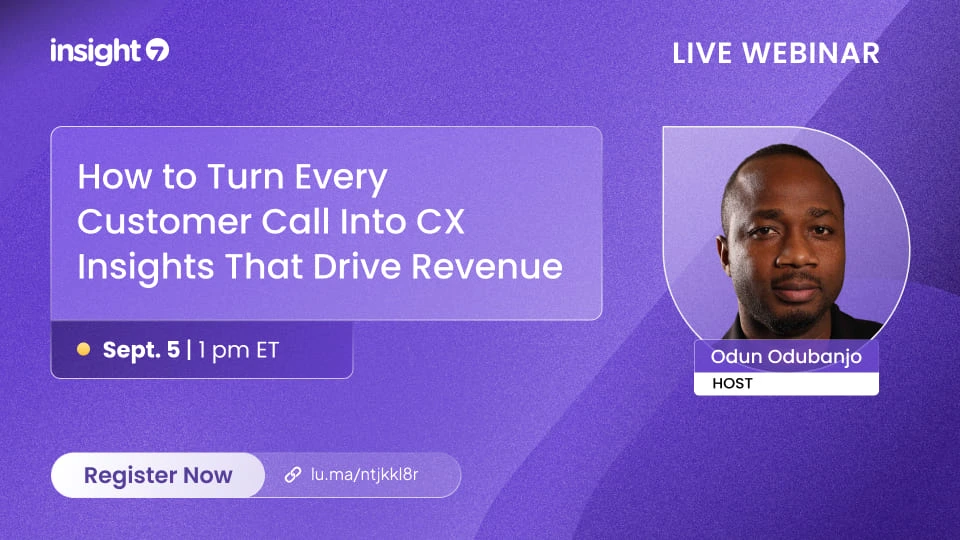Customer Feedback Analytics: Importance and Benefits
-
Bella Williams
- 10 min read
Customer feedback serves as a crucial element in shaping business strategies and enhancing customer retention. The ability to extract valuable insights from customer interactions offers a distinct advantage, often termed the Feedback Insight Advantage. First, organizations can gather feedback through various channels, including direct surveys, interviews, and social media. This flow of information enables businesses to identify pain points and areas for improvement.
Secondly, once the feedback is collected, analyzing it allows businesses to draw actionable insights. For instance, recognizing patterns in negative feedback can guide product enhancements or service adjustments. Furthermore, positive feedback reveals what is working well, enabling deeper customer engagement. By effectively utilizing these insights, businesses can create tailored experiences that drive loyalty and satisfaction, ultimately translating feedback into strategic growth opportunities. Thus, understanding the Feedback Insight Advantage is key to thriving in a competitive landscape.
Introduction: Understanding the Feedback Insight Advantage
In today's fast-paced market, the voice of the customer plays a pivotal role in driving business success. Understanding the Feedback Insight Advantage enables organizations to decode customer sentiments, preferences, and behaviors effectively. This deep comprehension not only influences product development but also shapes marketing strategies that resonate with target audiences.
Harnessing customer feedback is essential for building loyalty and fostering growth. By focusing on meaningful insights derived from direct interactions, businesses can identify pain points and opportunities for improvement. Embracing this approach transforms raw data into valuable knowledge, empowering organizations to adapt swiftly and make informed decisions.
Generate visualizations from your qualitative data. At Scale.

The Core of Feedback Insight Advantage: Why Customer Feedback Matters
Understanding the core of the Feedback Insight Advantage hinges on recognizing the immense value that customer feedback brings to businesses. Feedback serves as a vital lifeline, offering insights into customer needs and preferences. By actively seeking out and listening to this feedback, organizations can better tailor their services and products, fostering meaningful connections with their client base. This two-way engagement not only enhances customer satisfaction but also drives loyalty, ultimately contributing to long-term success.
Moreover, customer feedback matters because it provides a unique perspective that traditional data sources often overlook. Businesses that harness this information can identify areas of improvement and innovate solutions that resonate with their customers. This proactive approach enables companies to stay competitive in a dynamic marketplace, ensuring they remain responsive to changing consumer expectations. Embracing the Feedback Insight Advantage is not just beneficial; it’s essential for growth and sustainability in today’s business environment.
Types of Customer Feedback
Customer feedback can be categorized into various types, each offering unique insights that enhance understanding of customer experiences. Primary types of customer feedback include direct and indirect feedback, unsolicited feedback, and solicited feedback. Direct feedback typically arises from surveys or interviews, providing explicit opinions about products or services. In contrast, indirect feedback comes from observations, social media comments, and reviews, often reflecting customers' natural sentiments.
Solicited feedback is purposely gathered through structured methods, while unsolicited feedback is spontaneous. Each type contributes significantly to the feedback insight advantage. By analyzing these distinct categories, businesses can unravel trends and address customer needs more effectively. Utilizing the knowledge gained from different feedback types enables organizations to foster stronger customer relationships, enhance product offerings, and ultimately drive business growth. Understanding the nuances of customer feedback empowers companies to make informed decisions that resonate with their audience.
Gathering Meaningful Insights from Customer Feedback
Gathering meaningful insights from customer feedback helps organizations identify strengths and areas for improvement. By systematically analyzing input from customers, businesses can uncover trends, preferences, and pain points that are essential for refining products and services. The process involves categorizing feedback to distinguish between positive and negative sentiments, allowing for targeted responses and improvements.
To effectively gather insights, consider the following steps:
- Collect diverse feedback through surveys, interviews, and social media channels.
- Categorize the feedback into themes that highlight common customer experiences.
- Analyze the collected data to identify significant trends and patterns.
- Act on the insights gained to inform product development, marketing strategies, and customer service enhancements.
By focusing on these steps, businesses can harness the Feedback Insight Advantage, transforming raw data into actionable strategies that elevate customer satisfaction and loyalty. Effective feedback analytics not only builds trust but also positions organizations to thrive in a competitive marketplace.
Evaluate Performance on Customer Calls for Quality Assurance.
Capitalizing on the Feedback Insight Advantage: Transforming Feedback into Action
Transforming feedback into actionable insights is pivotal for any organization that seeks to thrive in a competitive environment. The Feedback Insight Advantage allows businesses to not just collect but also effectively leverage customer opinions. By understanding customers’ pain points and desires, companies can address issues and improve overall satisfaction. This transformation from feedback to action involves systematic steps that encourage deeper analysis.
The process begins with collecting and categorizing feedback. It is essential to ensure feedback is not only gathered but organized for easier analysis. Following this step, analyzing feedback for actionable insights becomes crucial. This involves identifying trends and patterns that can guide decision-making. By closely aligning business strategies with customer insights, organizations enhance their engagement and build loyalty. Ultimately, capitalizing on the Feedback Insight Advantage fosters a culture of continuous improvement, leading to sustained business growth and customer satisfaction.
Steps to Implement Feedback Analytics
Implementing feedback analytics effectively requires a structured approach. The first step involves collecting and categorizing feedback to ensure that insights can be easily accessed and analyzed later. Utilize various platforms, like surveys and social media channels, to gather responses from customers. Once the data is collected, categorize it into themes such as product features, customer service, or pricing. This organization helps identify key areas needing improvement.
The next step is to analyze the categorized feedback for actionable insights. Look for patterns and trends within the data to determine common customer pain points and positive experiences. By understanding these insights, businesses can make informed decisions to improve their products and services. This approach not only enhances customer satisfaction but also strengthens brand loyalty, demonstrating the true value of the Feedback Insight Advantage. The ongoing cycle of feedback collection and analysis ensures continuous improvement, making it an essential part of any customer-centric strategy.
- Step 1: Collect and Categorize Feedback
Gathering customer feedback is the foundational step in enhancing your business strategy. The first phase, therefore, is to collect and categorize this feedback effectively. Start by determining the sources of input, such as surveys, social media, or direct customer interactions. Each of these platforms provides valuable perspectives and insights. Once collected, it's essential to categorize the feedback into actionable themes. This process helps streamline analysis while focusing on key customer sentiments, whether positive or negative.
Understanding how to effectively categorize insights allows businesses to tap into the Feedback Insight Advantage. Consider grouping feedback based on product features, service quality, or customer experience. By identifying trends, companies can prioritize areas needing attention. Moreover, effective categorization helps in developing targeted strategies to enhance customer satisfaction. This structured approach ultimately serves as the basis for moving forward, enabling organizations to draw conclusive insights that drive improvements and customer loyalty.
- Step 2: Analyze Feedback for Actionable Insights
To effectively harness the Feedback Insight Advantage, the analysis of customer feedback is crucial. This stage involves extracting meaningful insights from gathered data, which can significantly influence product development and customer satisfaction strategies. By categorizing feedback into positive and negative comments, businesses can identify strengths and address weaknesses, leading to improvements that resonate with customers.
Once the feedback is categorized, organizations should look for trends and patterns, conducting thorough data analysis. This can involve querying the dataset to uncover common themes or unique opinions, which can guide strategic decisions. Analyzing feedback meticulously allows for actionable insights that inform business strategies, paving the way for innovations that align with customer expectations and enhance overall service delivery. Ultimately, this step is foundational in enabling the feedback loop to evolve, ensuring that customer voices contribute to the continuous improvement of products and services.
Benefits of Incorporating Customer Feedback into Business Strategy
Incorporating customer feedback into business strategy serves as a pivotal element for organizational growth. By actively listening to customer perspectives, businesses gain valuable insights that inform product development and service enhancement. This approach fosters customer loyalty and trust, ensuring that offerings align closely with consumer needs. Understanding customer sentiments not only improves user experience but also enables organizations to identify market trends and make informed decisions.
The Feedback Insight Advantage extends to numerous benefits, including enhanced customer satisfaction and retention. Organizations that systematically analyze feedback are better positioned to adapt to changing customer preferences. Additionally, this process aids in identifying gaps in the market, allowing for innovation. Companies can utilize this information to tailor marketing strategies effectively, ensuring they resonate well with the audience. Ultimately, embedding customer feedback into business practices promotes a culture of continuous improvement and responsiveness, driving long-term success.
Conclusion: The Strategic Impact of Leveraging the Feedback Insight Advantage
Harnessing the Feedback Insight Advantage profoundly influences strategic decision-making. Organizations can delve deep into customer sentiments, extracting valuable insights that guide product development and service enhancements. By systematically analyzing feedback, companies can identify trends and patterns, aligning their offerings with customer expectations.
Moreover, this strategic approach fosters a culture of responsiveness, demonstrating to customers that their voices are heard. As businesses prioritize customer-centric solutions, they establish stronger brand loyalty and improve overall satisfaction. Ultimately, using feedback insights effectively positions organizations to adapt proactively, ensuring continued relevance and growth in a competitive marketplace.
To truly understand customer sentiment, it is essential to recognize the intricacies of feedback and its role in shaping business strategies. The **Feedback Insight Advantage** enables organizations to collect valuable insights, identify trends, and respond effectively to customer needs. By actively engaging customers in the feedback process, businesses foster a sense of community and trust, making customers feel valued.
Collecting feedback is just the beginning. Analyzing this information allows companies to discern what resonates with their audience, leading to informed decision-making. By categorizing feedback and identifying common themes, organizations can focus their improvement efforts on critical areas that enhance customer satisfaction. This systematic approach not only assists in product development but also fine-tunes marketing strategies, ensuring that businesses remain aligned with customer expectations and desires. Ultimately, embracing the **Feedback Insight Advantage** equips businesses with the tools to create a more responsive and customer-centric environment.







